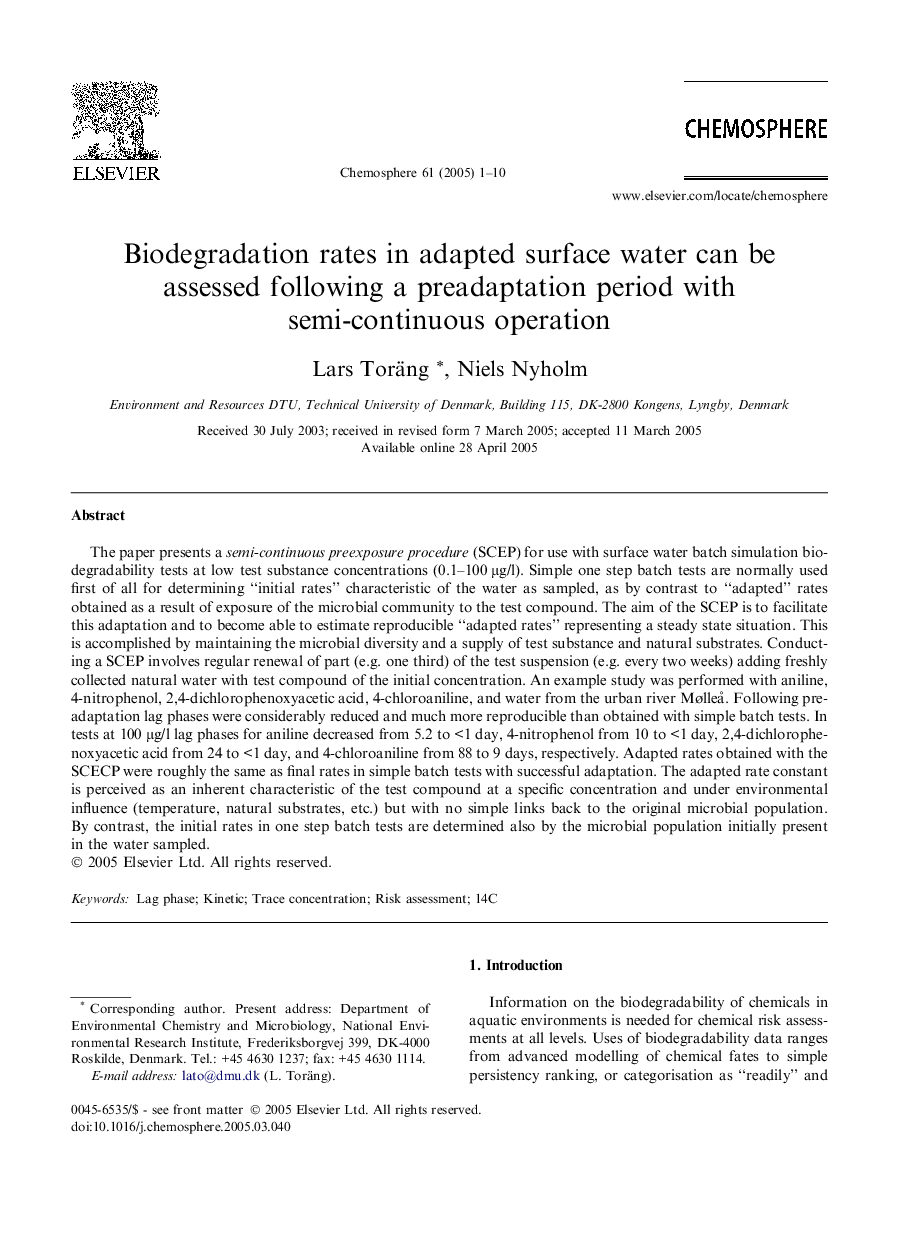| کد مقاله | کد نشریه | سال انتشار | مقاله انگلیسی | نسخه تمام متن |
|---|---|---|---|---|
| 9451445 | 1307822 | 2005 | 10 صفحه PDF | دانلود رایگان |
عنوان انگلیسی مقاله ISI
Biodegradation rates in adapted surface water can be assessed following a preadaptation period with semi-continuous operation
دانلود مقاله + سفارش ترجمه
دانلود مقاله ISI انگلیسی
رایگان برای ایرانیان
موضوعات مرتبط
علوم زیستی و بیوفناوری
علوم محیط زیست
شیمی زیست محیطی
پیش نمایش صفحه اول مقاله

چکیده انگلیسی
The paper presents a semi-continuous preexposure procedure (SCEP) for use with surface water batch simulation biodegradability tests at low test substance concentrations (0.1-100 μg/l). Simple one step batch tests are normally used first of all for determining “initial rates” characteristic of the water as sampled, as by contrast to “adapted” rates obtained as a result of exposure of the microbial community to the test compound. The aim of the SCEP is to facilitate this adaptation and to become able to estimate reproducible “adapted rates” representing a steady state situation. This is accomplished by maintaining the microbial diversity and a supply of test substance and natural substrates. Conducting a SCEP involves regular renewal of part (e.g. one third) of the test suspension (e.g. every two weeks) adding freshly collected natural water with test compound of the initial concentration. An example study was performed with aniline, 4-nitrophenol, 2,4-dichlorophenoxyacetic acid, 4-chloroaniline, and water from the urban river MølleÃ¥. Following preadaptation lag phases were considerably reduced and much more reproducible than obtained with simple batch tests. In tests at 100 μg/l lag phases for aniline decreased from 5.2 to <1 day, 4-nitrophenol from 10 to <1 day, 2,4-dichlorophenoxyacetic acid from 24 to <1 day, and 4-chloroaniline from 88 to 9 days, respectively. Adapted rates obtained with the SCECP were roughly the same as final rates in simple batch tests with successful adaptation. The adapted rate constant is perceived as an inherent characteristic of the test compound at a specific concentration and under environmental influence (temperature, natural substrates, etc.) but with no simple links back to the original microbial population. By contrast, the initial rates in one step batch tests are determined also by the microbial population initially present in the water sampled.
ناشر
Database: Elsevier - ScienceDirect (ساینس دایرکت)
Journal: Chemosphere - Volume 61, Issue 1, September 2005, Pages 1-10
Journal: Chemosphere - Volume 61, Issue 1, September 2005, Pages 1-10
نویسندگان
Lars Toräng, Niels Nyholm,